The beauty of nature has a miraculous ability to captivate our hearts through its stunning creations, and one such creation that exemplifies this is the Rufous Hummingbird. This small and enchanting bird with its vibrant feathers, mesmerizing way of flying, and delightful character always manages to make a lasting impact. Through this blog post, we will embark on a journey to explore the captivating allure of the Rufous Hummingbird and unveil the extraordinary traits that make it a true treasure of the avian realm.
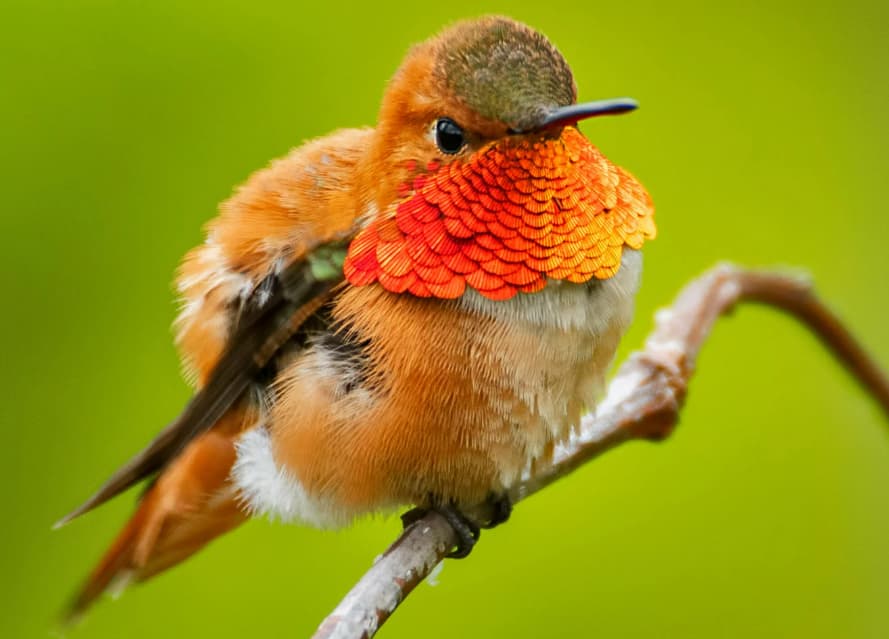
Physical Characteristics
Meet the Rufous Hummingbird (Selasphorus rufus), a delightful bird that may be small in size but certainly not in charm. With a body length ranging from 3 to 4 inches, this avian wonder proves that good things come in small packages.
The male Rufous Hummingbird is especially captivating, showcasing an impressive blend of vibrant colors. Its plumage boasts a captivating combination of fiery oranges, deep reds, and glistening browns. What truly sets this little bird apart is its mesmerizing gorget, which refers to the iridescent feathers on its throat. When hit by the sun’s rays at just the right angle, these feathers magically transform from a radiant copper hue to a striking shade of red. It’s like having a tiny, metallic-colored treasure right before your eyes.
Indeed, the sight of this iridescence is truly something to behold, giving the Rufous Hummingbird an otherworldly aura. Despite its small stature, this tiny marvel manages to leave a lasting impression and captivate anyone lucky enough to catch a glimpse.
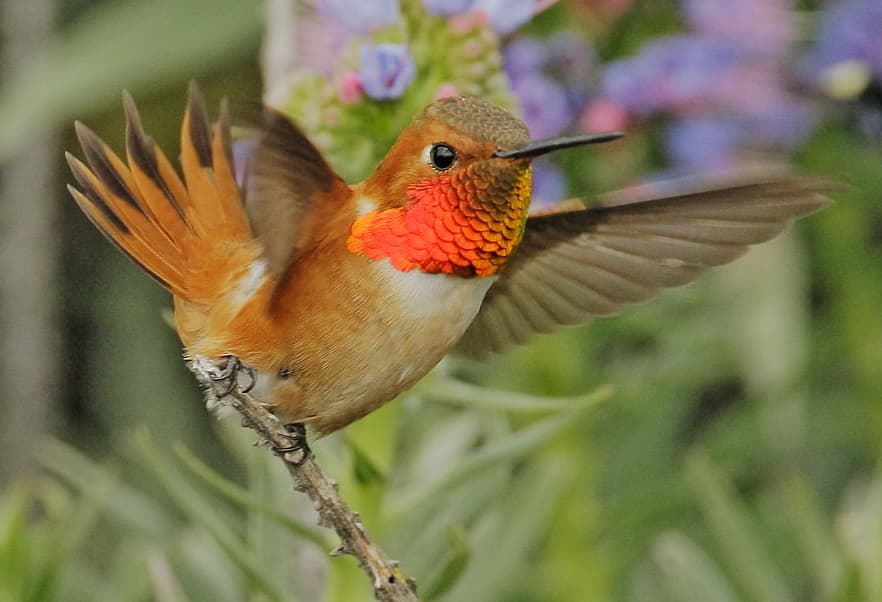
The female Rufous Hummingbird, although not as flashy as the male, possesses her own unique beauty. Her feathers display a more understated color palette, blending green and brown tones that seamlessly blend with her surroundings. This natural camouflage is an effective way for her to protect her nests and offspring from potential predators.
One of the most captivating aspects of the Rufous Hummingbird is its remarkable flight behavior. These birds have an extraordinary wingbeat rate, capable of reaching an impressive 60 beats per second. Their rapid wingbeats allow them to effortlessly hover in mid-air, defying gravity and treating us to breathtaking aerial performances. The humming sound produced by their wings only adds to their allure, giving them their fitting name, “hummingbirds.”
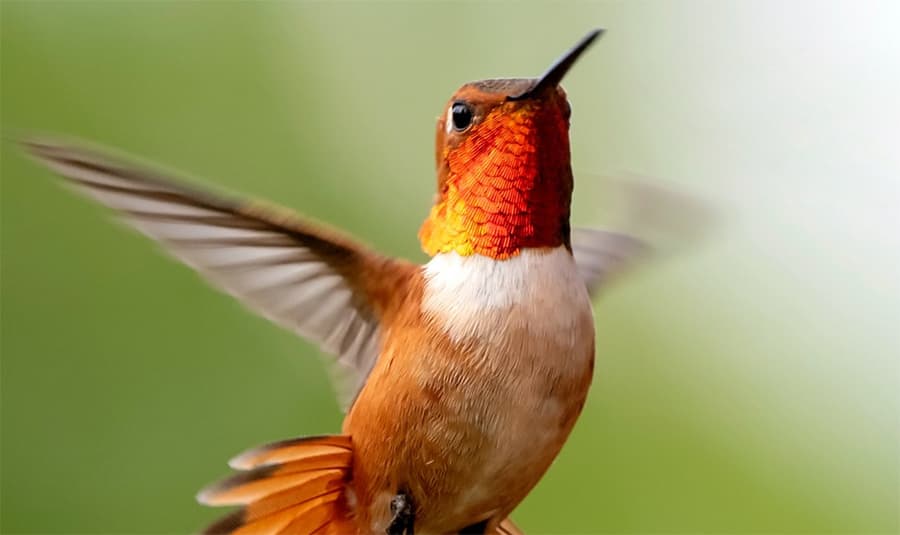
The flight behaviors of the Rufous Hummingbird are truly remarkable, with a combination of remarkable speed and agility. These little birds embark on extensive migratory journeys, covering up to 3,000 miles not once, but twice a year, which clearly demonstrates their impressive stamina. When they take to the air, their movements resemble a mesmerizing dance, captivating anyone who has the privilege of observing them.
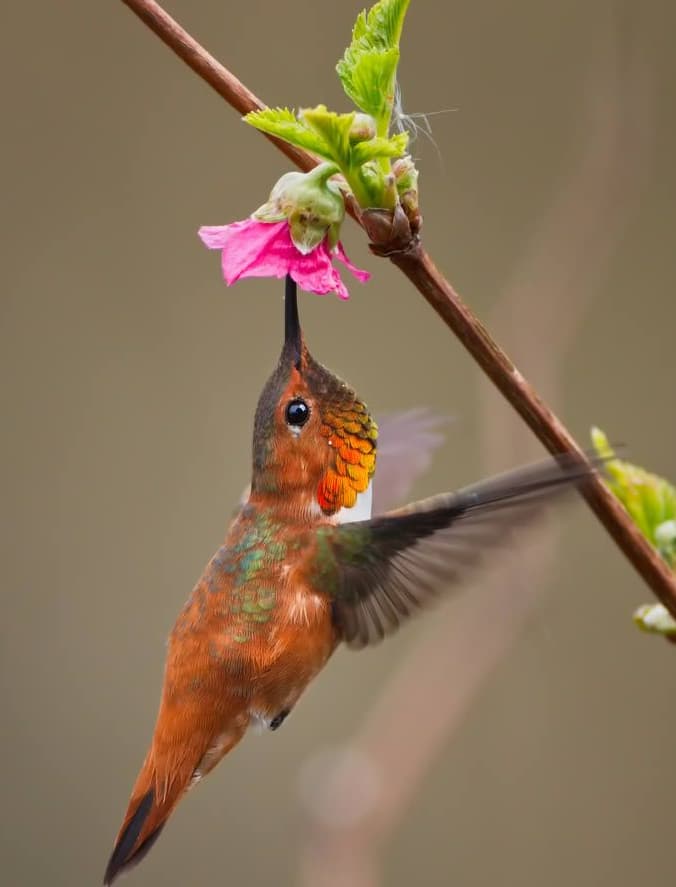
The ecological importance of Rufous Hummingbirds goes beyond their enchanting beauty. Not only do they serve as a visual delight, but they also contribute significantly to maintaining ecological harmony. When these hummingbirds sip nectar from flowers, they unknowingly perform the crucial task of pollination, promoting the cross-pollination process and aiding in the reproduction of diverse plant species. In an exquisite example of a mutually beneficial relationship, the hummingbirds depend on these nectar-filled flowers to fuel their energy during their migratory expeditions.
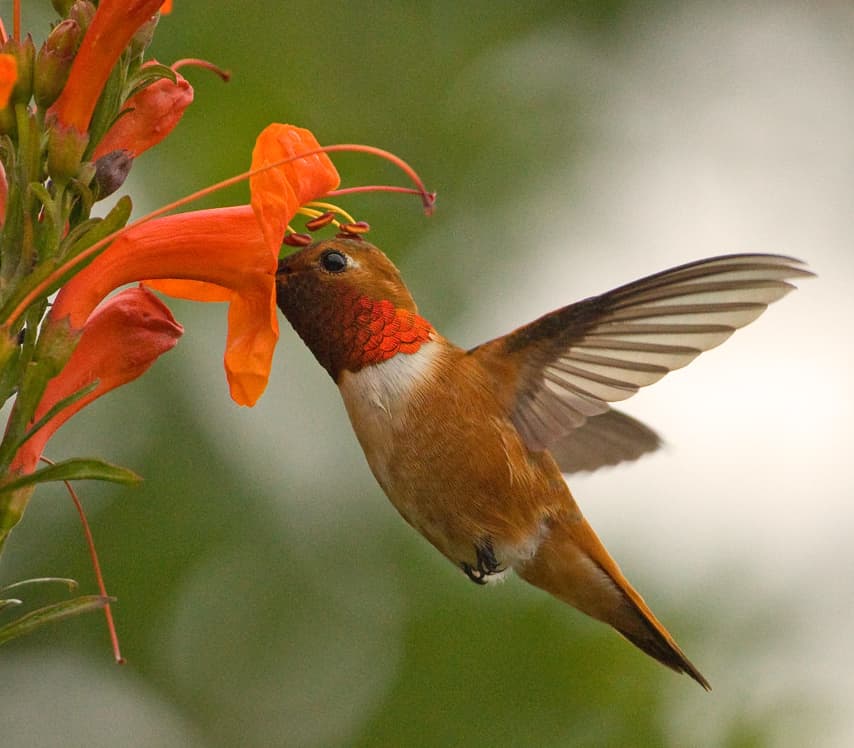
With their distinct beak and elongated tongue, Rufous Hummingbirds have developed a unique way of obtaining nectar from flowers, allowing them to access hidden nectar reserves that are inaccessible to other pollinators. By actively engaging in this mutually beneficial relationship with plants, these hummingbirds play a crucial role in maintaining the overall health and diversity of their ecosystems.
When it comes to their feeding habits, Rufous Hummingbirds have an insatiable appetite for nectar, making it their primary source of sustenance. They are particularly drawn to an array of flowering plants such as trumpet vines, columbines, penstemons, and salvias, just to name a few. In addition to nectar, these tiny birds also incorporate insects and spiders into their diet, ensuring that they receive an extra boost of protein and essential nutrients.
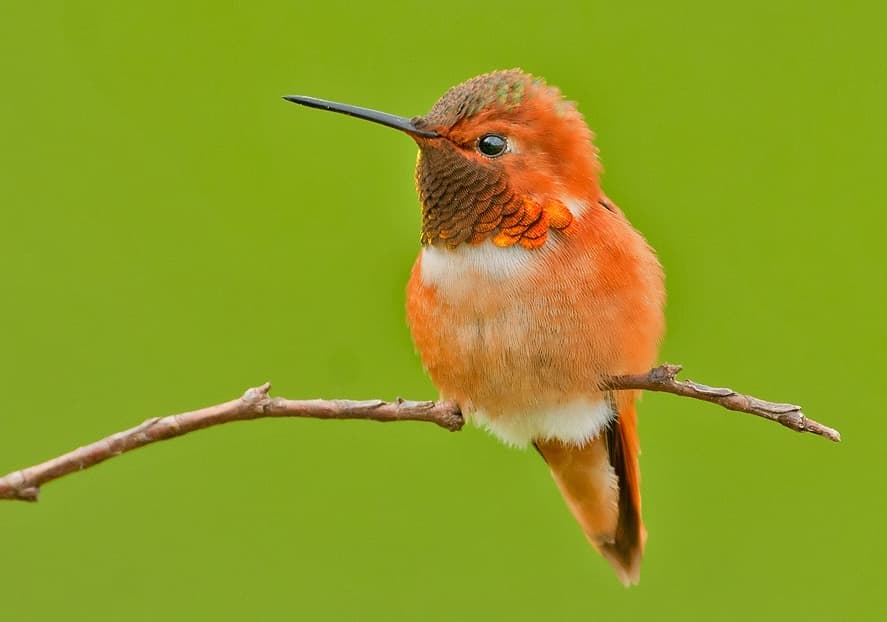
Breeding and Nesting
In the season of reproduction, male Rufous Hummingbirds showcase their charm with captivating courtship displays, aiming to win over a potential partner. This enchanting performance involves breathtaking aerial tricks, resulting in a mesmerizing display of vibrant hues and graceful movements. Once a pair establishes a deep connection, it is the female’s role to skillfully build a cozy, cup-shaped nest using a combination of plant fibers, moss, and lichens. She masterfully hides this nurturing sanctuary amidst thick foliage or on sturdy tree branches, ensuring its perfect camouflage. These diligently constructed nests act as a secure sanctuary, shielding their precious offspring until they are prepared to explore the wide world.
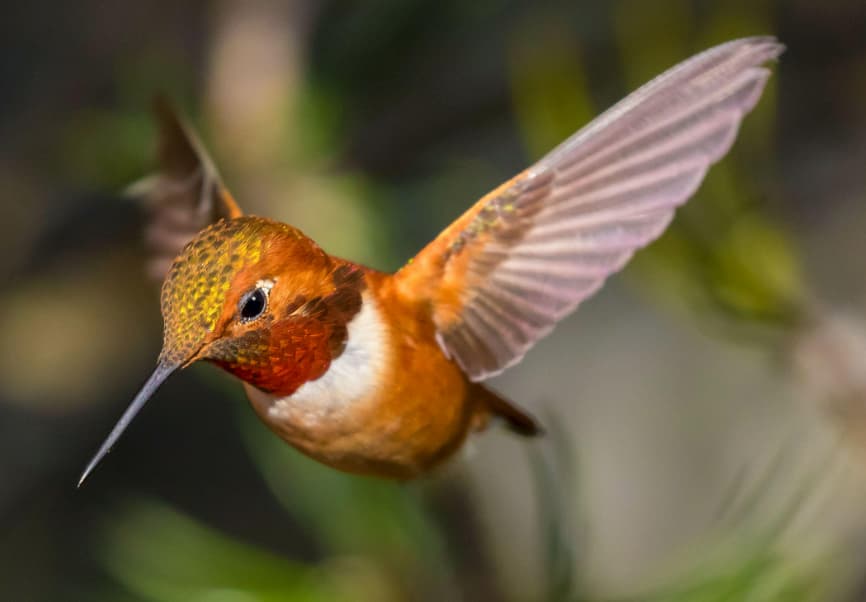
Wrap-Up
When we immerse ourselves in the wonders of nature, it’s hard not to be captivated by the splendid Rufous Hummingbird. This enchanting creature with its vibrant hues, graceful flight, and ecological importance is a true representation of strength and elegance. Delighting in the presence of these fragile birds in their natural environment fills us with awe and prompts us to acknowledge the intricate marvels that lie within the animal realm. The Rufous Hummingbird exemplifies a living masterpiece, and by valuing and safeguarding these avian treasures, we secure the opportunity for future generations to indulge in their enchanting allure.
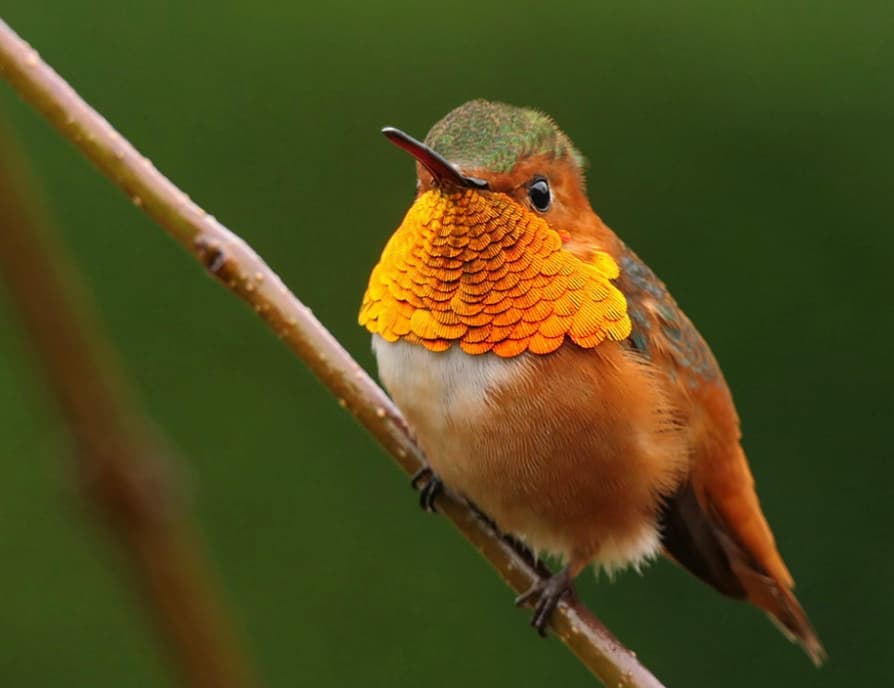
Video:


